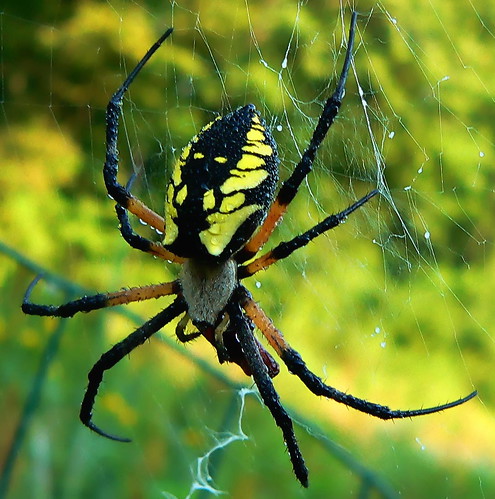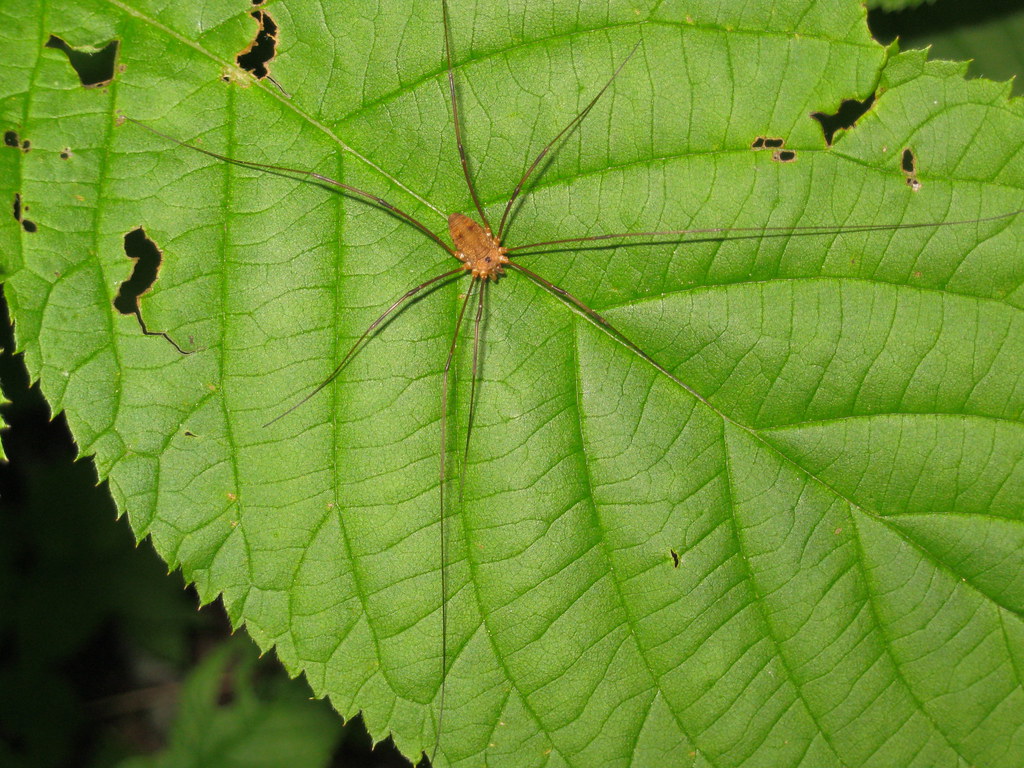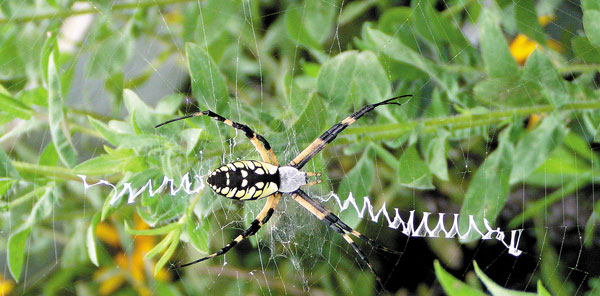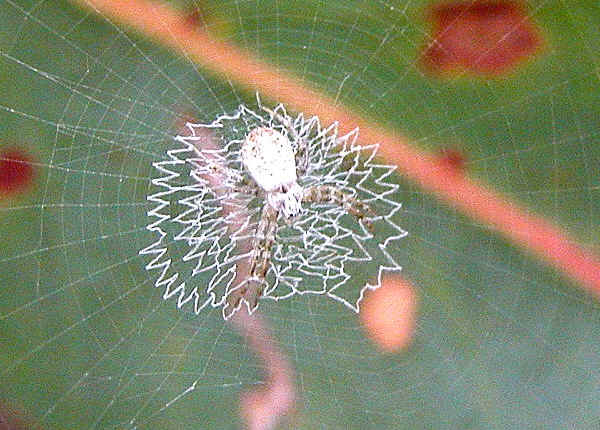
What is this? An alien from outer space? No! It's an ordinary jumping spider, no larger than the size of your the fingernail on your thumb! Here are more facts about spiders:
Spiders are very different from insects in a few different ways. Insects have three body segments: head, thorax, and abdomen. Spiders have only two: cephalothorax and abdomen. Also, while insects have six legs, spiders have eight. Spiders are not considered insects! They are Arachnids.
 |
| Count the legs! There are eight! |
In the front image, you must have noticed the multitude of EYES! Most spiders have four pairs of eyes on the top-front area of the cephalothorax, arranged in patterns that vary from one family to another. The pair at the front are of the type called pigment-cup ocelli ("little eyes"), which in most arthropods are only capable of detecting the direction from which light is coming, using the shadow cast by the walls of the cup. However, the main eyes at the front of spiders' heads are pigment-cup ocelli that are capable of forming images. All these eyes help the spider see all around its head for prey and predators.
Close up of a spider's eye!
One unique quality of most spiders is their ability to spin webs. Their abdomens bear appendages that have been modified into spinnerets that extrude silk from up to six types of silk glands within their abdomen. Spider webs vary widely in size, shape and the amount of sticky thread used. It is a spider's instinct to spin the particular web that allows it to successfully catch an insect in its bonds. However, some patterns in webs appear in only certain species of spiders. Take, for instance, the yellow-and-black garden spider. In its webs, it weaves a zigzag line. Here is an image.
A different sort of web pattern
Every spider can bite, will bite, and contains a tiny bit of venom in it. However, some species are more dangerous than others. For example, the black widow. If you see something like this(below), STAY AWAY!!
You can recognize a black widow from an ordinary spider by the distinctive triangle hourglass patterning in red on the abdomen.
Now, here is an example of an almost-harmless type of spider: the harvestman, also known as daddy-long-legs. This spider is almost all legs, and in fact, does not spin webs. Here is a picture of one:

In this image, you probably noticed that this spider lacks all eight legs. These spiders have flimsy legs, so they easily break off the body.




No comments:
Post a Comment